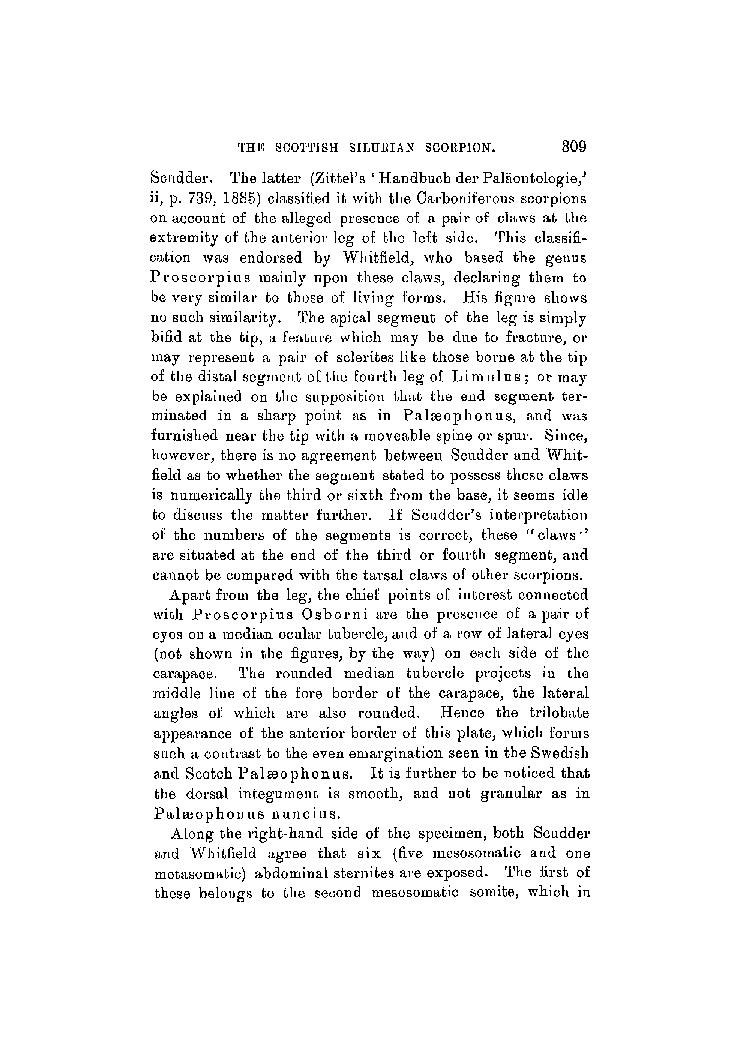Scudder. The latter (Zittel's 'Handbuch der Paläontologie,' ii, p. 739, 1885) classified it with the Carboniferous scorpions on account of the alleged presence of a pair of claws at the extremity of the anterior leg of the left side. This classification was endorsed by Whitfield, who based the genus Proscorpius mainly upon these claws, declaring them to be very similar to those of living forms. His figure shows no such similarity. The apical segment of the leg is simply bifid at the tip, a feature which may be due to fracture, or may represent a pair of sclerites like those borne at the tip of the distal segment of the fourth leg of Limulus; or may be explained on the supposition that the end segment terminated in a sharp point as in Palæophonus, and was furnished near the tip with a moveable spine or spur. Since, however, there is no agreement between Scudder and Whitfield as to whether the segment stated to possess these claws is numerically the third or sixth from the base, it seems idle to discuss the matter further. If Scudder's interpretation of the numbers of the segments is correct, these "claws" are situated at the end of the third or fourth segment, and cannot be compared with the tarsal claws of other scorpions.
Apart from the leg, the chief points of interest connected with Proscorpius Osborni are the presence of a pair of eyes on a median ocular tubercle, and of a row of lateral eyes (not shown in the figures, by the way) on each side of the carapace. The rounded median tubercle projects in the middle line of the fore border of the carapace, the lateral angles of which are also rounded. Hence the trilobate appearance of the anterior border of this plate, which forms such a contrast to the even emargination seen in the Swedish and Scotch Palæophonus. It is further to be noticed that the dorsal integument is smooth, and not granular as in Palæophonus nuncius.
Along the right-hand side of the specimen, both Scudder and Whitfield agree that six (five mesosomatic and one metasomatic) abdominal sternites are exposed. The first of these belongs to the second mesosomatic somite, which in
